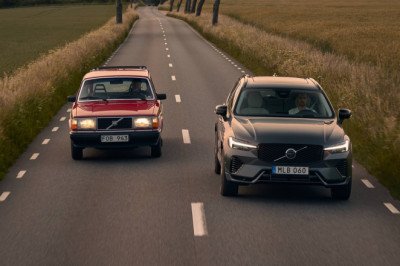
Venerated car designer Ian Callum has worked for a few big automakers, but is currently focusing on adjacent projects like reviving the Aston Martin Vanquish and even making a street-legal Jaguar C-X75 concept car with his own outfit, Callum Designs. Today, his team announced a new project: The Wood and Pickett Mini by Callum. I thought that was some kind of home restoration lifestyle brand, but shame on me. It is, in fact, one of the best partners for a Mini restoration project you could get.
Wood and Pickett, Ltd. goes back to the 1960s—the company was modding original Minis to highline specs when the tiny cars were new. It technically started in 1947, when Bill Wood and Les Pickett left jobs at another coachbuilder called Hooper & Co to start their own thing. The car industry was very different back then, and there was enough market for upgrading cars for quite a few coachbuilders to exist. In a sense, trim levels as we know them today were being made by small aftermarket outfits rather than OEMs. Wood and Pickett focused on Minis after the Radford Mini de Ville came out in ’63 and proved that there was a market for high-class upgrades on the compact cars.
Wood and Pickett’s own Mini variant was known as the Margrave, and it was clearly good enough to get some attention as the little company was able to poach several key managers from rival Radford in just a few short years. The coachbuilder eventually expanded its lineup to include customized versions of the first-gen Range Rover and a few other popular British cars through the ’70s and ’80s.
In the 1990s, there were some ownership changes, and the brand pivoted from coachbuilding to parts and accessories. As far as I can tell from my little morning research session here, Wood and Pickett’s next milestone was in 2022 when British classic car parts specialist Motaclan Limited acquired it.
But as of today, Motaclan’s Wood and Pickett link brings you to a new page dedicated to the Wood and Pickett Mini by Callum—which might be the best possible way for the coachbuilder to make a comeback. This brings us to the machine itself—an extremely cool rendition of the old Mini with minimal modernization and maximal class. I don’t even like restomods all that much in principle, but this thing is perfecto.
As it’s pitched from the purveyors: “The Wood and Pickett Mini by CALLUM is a redefinition of the classic British icon. Built on a fully restored Mk5 Sportspack body shell, it incorporates an entirely bespoke design package, drawing on both Wood and Pickett’s coachbuilding legacy and CALLUM’s contemporary design expertise.” Swipe through these images to see it from every angle:
The “Mk5” design was the one used by Mini from 1997 to 2001. Yes, the original Mini was being made that recently. It’s tough to tell the difference between the ’60s Mini body and one from Y2K at a glance, but this new Callum version will be a little easier to spot. Intense fender flares and aero splitters give the car a much more aggressive stance, though the Mini’s charming friendliness is still safely intact. Auxiliary lighting in the grille and a slick taillight design modernize the exterior just enough to look good without being gross.
Aside from all the decorative details you can see in these pictures, this car will get a “rebuilt 1310cc Stage 3 road/rally engine” with a performance cylinder head, twin-point injection, and a dual exhaust. It’s supposed to be good for 110 brake horsepower. Should be more than enough to motivate this little car (an OG Mini weighs under 1,500 pounds).
Behind the wheels are 8.4-inch disc brakes and what’s just described as a “road-tuned suspension kit,” likely meaning, not track-level stiff.
The wheel design is the biggest triumph here to me, though. The design and size (when’s the last time you saw 13s?) are absolutely perfect and round out the restomod’s whole look exceptionally well.
Inside is kept pretty simple and stately. There’s a small DIN-style screen for infotainment, but everything else is old school.
Callum Designs shared, “No two builds will be alike, each customer will collaborate closely with CALLUM’s design team to create a Mini that reflects their individual vision,” so it’ll be cool to see what people do with these when they start popping up at car meets. They’ll be hand-made in England on a “limited production run” starting at £75,000, which is about $102,000 at this moment. Tough to say what one of these would exactly end up costing in America, but you might be able to avoid tariffs by sneaking it into your carry-on luggage.
Know anything else interesting about classic Mini restoration? Drop the author a note at andrew.collins@thedrive.com.
Automotive journalist since 2013, Andrew primarily coordinates features, sponsored content, and multi-departmental initiatives at The Drive.















Facebook Conversations